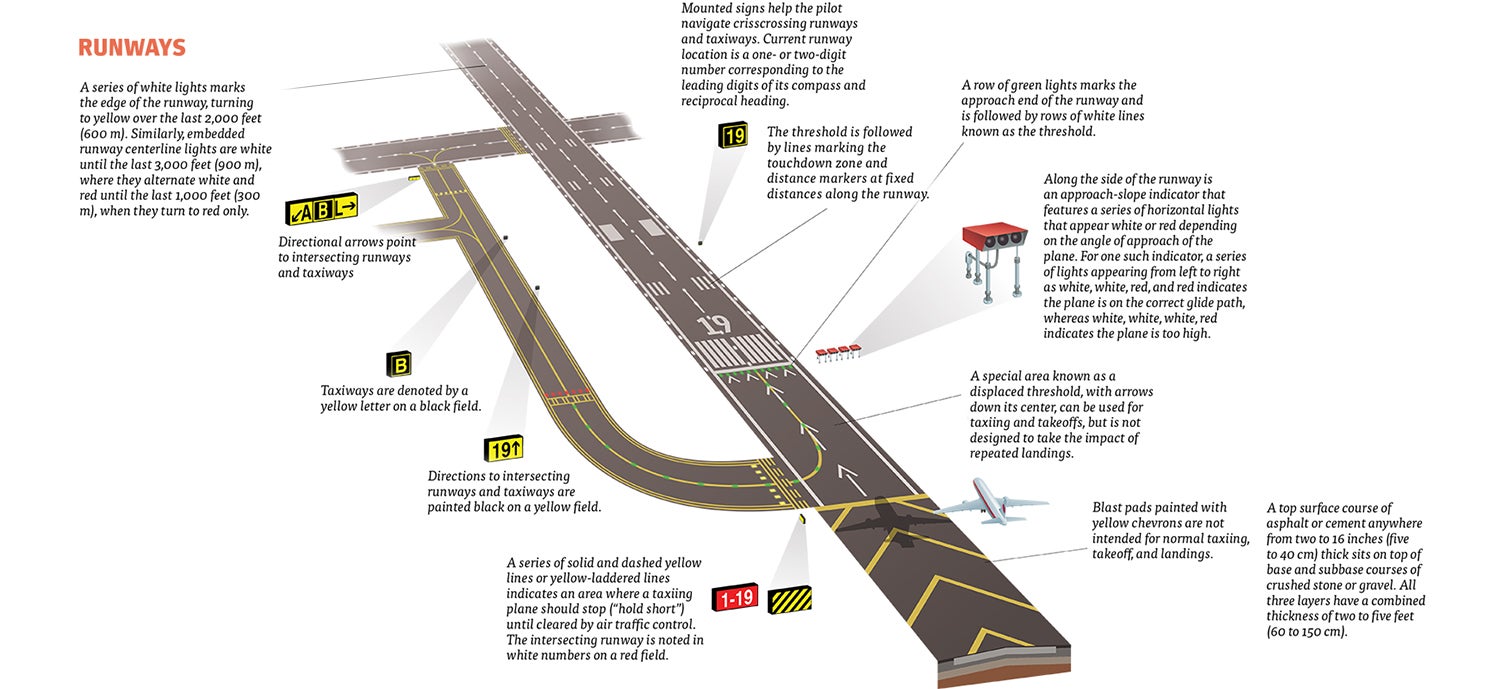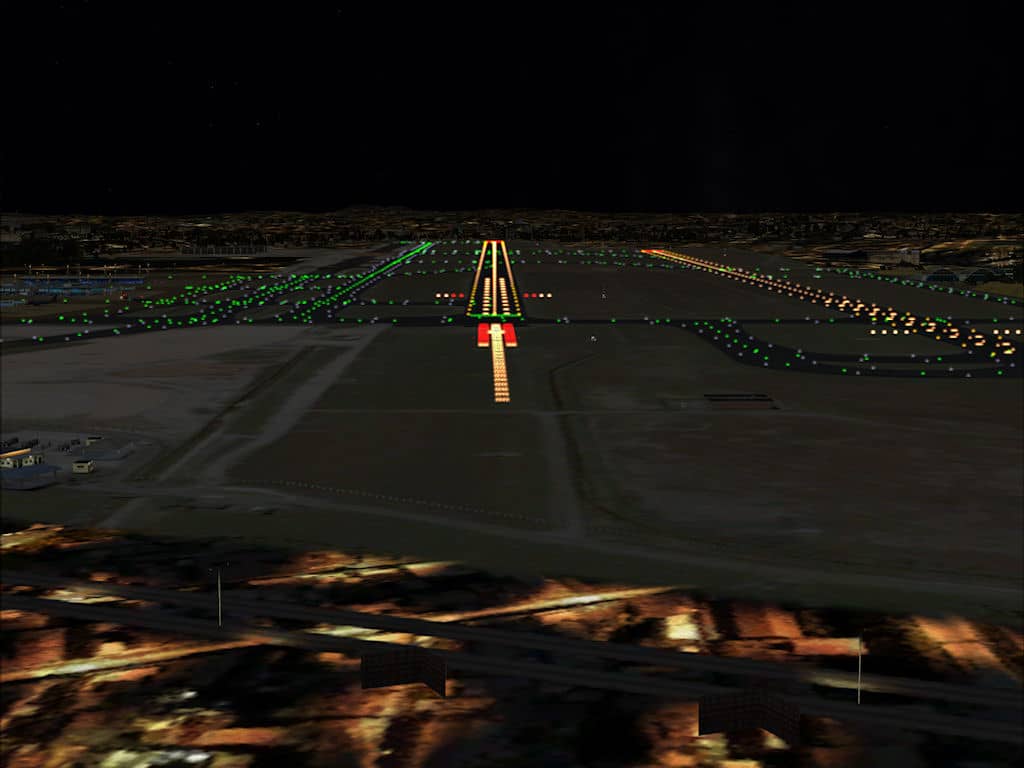Runway Lightings and Markings
 |
Signs and Symbols at the Runway |

Types of Runways
 |
| Single Runway |
 |
| Parallel Runway |
 |
| Open V |
Runway Numbering
 |
| Runway Numbering |
Runway Lighting
 |
| Approach Lights System |
Approach Lights System (ALS) provide the basic means to transition from
instrument flight to visual flight for landing. Operational requirements
dictate the sophistication and configuration of the approach light system for a
particular runway.
Visual Glideslope Indicators
Visual Approach Slope Indicator (VASI)
 |
| 2 Bar VASI |
VASI installations may consist of either 2, 4, 6, 12,
or 16 light units arranged in bars referred to as near, middle, and far bars.
Most VASI installations consist of 2 bars, near and far, and may consist of 2,
4, or 12 light units. Some VASIs consist of three bars, near, middle, and far,
which provide an additional visual glide path to accommodate high cockpit
aircraft. This installation may consist of either 6 or 16 light units. VASI
installations consisting of 2, 4, or 6 light units are located on one side of
the runway, usually the left. Where the installation consists of 12 or 16 light
units, the units are located on both sides of the runway.
Two-bar VASI installations provide one visual glide
path which is normally set at 3 degrees. Three-bar VASI installations provide
two visual glide paths. The lower glide path is provided by the near and middle
bars and is normally set at 3 degrees while the upper glide path, provided by
the middle and far bars, is normally 1/4 degree higher. This higher glide path is intended for use only by
high cockpit aircraft to provide a sufficient threshold crossing height.
Although normal glide path angles are three degrees, angles at some locations
may be as high as 4.5 degrees to give proper obstacle clearance. Pilots of high
performance aircraft are cautioned that use of VASI angles in excess of 3.5
degrees may cause an increase in runway length required for landing and
rollout.
The basic principle of the VASI is that of color
differentiation between red and white. Each light unit projects a beam of light
having a white segment in the upper part of the beam and red segment in the
lower part of the beam. The light units are arranged so that the pilot using
the VASIs during an approach will see the combination of lights shown below.
The VASI is a system of lights so arranged to provide
visual descent guidance information during the approach to a runway. These
lights are visible from 3-5 miles during the day and up to 20 miles or more at
night. The visual glide path of the VASI provides safe obstruction clearance
within plus or minus 10 degrees of the extended runway centerline and to 4 NM
from the runway threshold. Descent, using the VASI, should not be initiated
until the aircraft is visually aligned with the runway. Lateral course guidance
is provided by the runway or runway lights. In certain circumstances, the safe
obstruction clearance area may be reduced due to local limitations, or the VASI
may be offset from the extended runway centerline. This will be noted in the
Airport/ Facility Directory.
The precision approach path indicator (PAPI) uses light units similar to the VASI but are installed in a single row of either two or four light units. These lights are visible from about 5 miles during the day and up to 20 miles at night. The visual glide path of the PAPI typically provides safe obstruction clearance within plus or minus 10 degrees of the extended runway centerline and to 4 SM from the runway threshold. Descent, using the PAPI, should not be initiated until the aircraft is visually aligned with the runway. The row of light units is normally installed on the left side of the runway and the glide path indications are as depicted. Lateral course guidance is provided by the runway or runway lights. In certain circumstances, the safe obstruction clearance area may be reduced due to local limitations, or the PAPI may be offset from the extended runway centerline.
Precision Approach Path Indicators (PAPI)
The precision approach path indicator (PAPI) uses light units similar to the VASI but are installed in a single row of either two or four light units. These lights are visible from about 5 miles during the day and up to 20 miles at night. The visual glide path of the PAPI typically provides safe obstruction clearance within plus or minus 10 degrees of the extended runway centerline and to 4 SM from the runway threshold. Descent, using the PAPI, should not be initiated until the aircraft is visually aligned with the runway. The row of light units is normally installed on the left side of the runway and the glide path indications are as depicted. Lateral course guidance is provided by the runway or runway lights. In certain circumstances, the safe obstruction clearance area may be reduced due to local limitations, or the PAPI may be offset from the extended runway centerline.
 |
| Runway at night |
 |
| Runway at night |

Nice Post....
ReplyDeleteWe are having very interesting information regarding Solar Street Light Manufacturers in India!